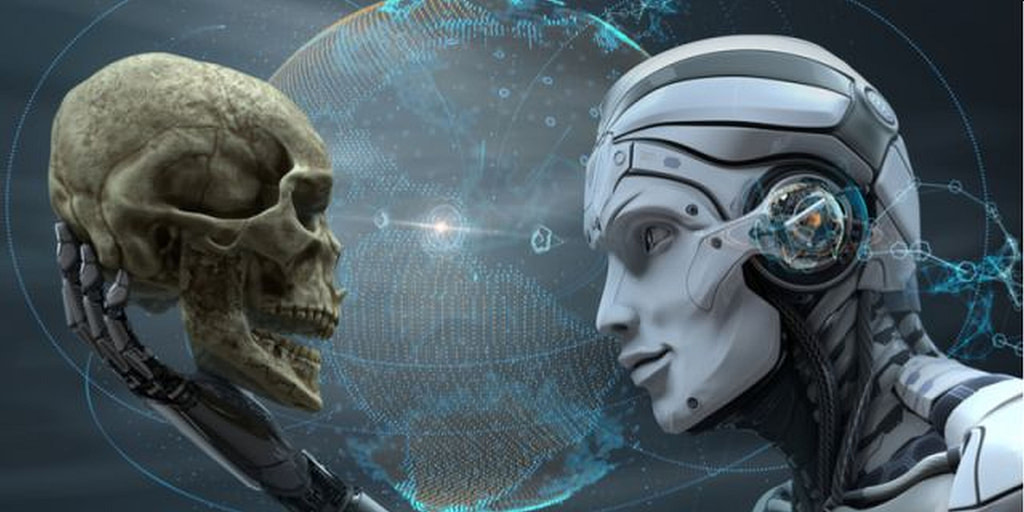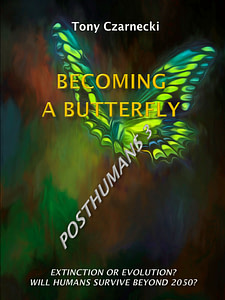For the vast majority of us the most important goal is to live a long and healthy life, and prepare a similar life for our children, grandchildren, etc., ad infinitum. The problem is that there is no such infinitum. We take it for granted that, as a species, we will exist forever. Very few of us consider that over 99% of all species, which once existed, are now extinct. How can we be an exception?

This is the question I have asked in my book “Who could save Humanity from Superintelligence?”. The paradox is that the probability of a human extinction from natural causes (e.g. an asteroid impact) in this century is less than 0.00002%, whereas it is between 20% – 50% from man-made causes. In “Democracy for a Human Federation”, I have identified democracy, as the key element needed for our civilization to survive man-made existential risks, including the risk of developing a malicious Superintelligence. In my recent book, “Becoming a Butterfly“, I conclude that Humanity must not only manage various existential risks, which it has itself created, but also manage its own evolution. The analogy in the book’s title is not perfect, since caterpillars and butterflies are the same species. However, what is almost identical, is the process of metamorphosis, which humans may have to go through, while evolving into a new species.
We are the only species, which is consciously capable of minimizing the risk of its extinction and control its own evolution in a desired direction. We have already been doing it in some way over millennia by controlling our evolution but in a cultural and social sphere, which has also strengthened our resilience to extinction. But today we may be able to control our physical evolution into a new species, while retaining a cultural and social pedigree. We will only be successful if we do it gradually, using a process of transformation similar to a caterpillar becoming a butterfly. To summarize, in the next few decades, our future may evolve in one of three ways:
- Some existential events may combine, like pandemic, global warming and a global nuclear war, resulting in a complete extinction of the human species. There is 20-50% of that happening within this century (Stephen Hawking, Martin Rees)
- Some existential events, which also includes developing an immature malicious AI, may bring our civilization to near extinction with some humans surviving. A new civilization may then be built on the remnants of this civilization, reaching the current technological level within a century, and facing similar existential risks as we do now. That cycle may continue even for a few centuries, in which case the human species’ extinction may be delayed
- Finally, the third option is that we develop a friendly Superintelligence, which would broadly adopt our best human values, and which would not only help us minimizing existential threats but would also create a pathway for human species evolution.
I believe this third option is the only good alternative that is available to us. If so, what should we then do, and what should be the priorities, assuming we only have just about one decade to implement such an option? It seems that the best way forward is to focus our efforts on three areas almost simultaneously, rather than in any particular order:
- Carrying out a deep reform of democracy. That means starting with a thorough review of key human values, rights and responsibilities and then modifying the way, in which we are governed as citizens of this planet and our subsidiary website Euro Agora explains why it is so important in the context of our survival as a species
- Building a planetary civilization. We cannot rely on the United Nations to fulfil that role and it is justified further on Euro Agora website. That requires a new organization that would act as a de facto World Government. However, we do not have the time to create such an organization from scratch. The only option left is for the most capable, already federated organization, to take on such a role and act on behalf of the whole civilization
- Ensuring a global regulatory governance over the development of AI. This should continue until the AI matures into a friendly Superintelligence, when it will become our partner and ultimately guide our evolution into a new species. To achieve that, we need to create an international organization, with a complete control on the scope and capabilities of AI. This was covered under the Transhumans tab.
I realize how unrealistic these objectives seem to be, especially if we only have about one decade, by which time all three elements safeguarding the future of Humanity should be in place. However, sometimes only when a case is made quite bluntly, we get motivated to solve a problem. After all, that is the purpose of this website – to add some suggestions to a common melting pot of ideas and identify the best options for humans to avoid extinction and instead, control our evolution.
Most of the articles on the subject of Transhumanism and Posthumanism on this website are based on Tony Czarnecki’s book – ‘Becoming a Butterfly‘.


Hi Tony,
I loved the optimism of your post on vaccination, but the whole history of life on earth has got me thinking that, rather than morphing with AI, it may actually be time to just pass on the baton. In writing The Spring of Civilization (1973), i think that I may have been naive to regard history as a process in which the ideal end point could be the emergence of a peaceful, sustainable human federation of around a thousand small states working together like the cells of a healthy organism. In reality, this was never the case. The first life must have been autotrophic, but it was not long before heterotrophic life evolved to prey upon all the autotrophic life forms; then chloroplasts appeared, adding photosynthesis and plant life to the mix; but plants were followed by herbivores that live by killing plants, carnivores that live by killing other animals, and humans who live by killing both other animals and plants on an industrial scale, and who go on to kill each other and develop ever more sophisticated and deadly means of doing so, while themselves falling prey to computer viruses and malware that they themselves have developed and, along with all other animals, plants and micro-organisms, also falling prey to natural viruses that have evolved solely to live by destroying the cells of all cellular and multi-cellular life forms.
In short: with the sole exception of photosynthesis, the whole story of evolution is both amazingly complex and comprehensively sick.
Human life cannot and should not be the end of history, but just a staging post in achieving that end: super-intelligent photosynthetic beings that can live without needing to prey upon other life forms.
Fortunately, in creating artificial intelligence, we are approaching a point where it can take over to create these beings* to properly appreciate the universe and to colonize it while, possibly, keeping a peaceful, sustainable human federation back on Earth as a historic reminder of where they came from – a bit like the USA preserving Williamsburg. Cheers, Ian.
*Bring on the photosynthetans!
Thank you, Ian, for these deep thoughts. What else can I say – I entirely agree with your view that photosynthetic beings may end the vicious circle of evolution, i.e. those in the higher pecking order eat those below. After all, the universe is a giant computer fed by infinite, undiminishable energy. Post humans in a digital form will start the journey on the way back to where they came from – the Big Bang.
I cover this subject in my new book – Becoming a Butterfly, which should be published by the end of May.
Cheers
Tony
Thanks Tony. I look forward to it.